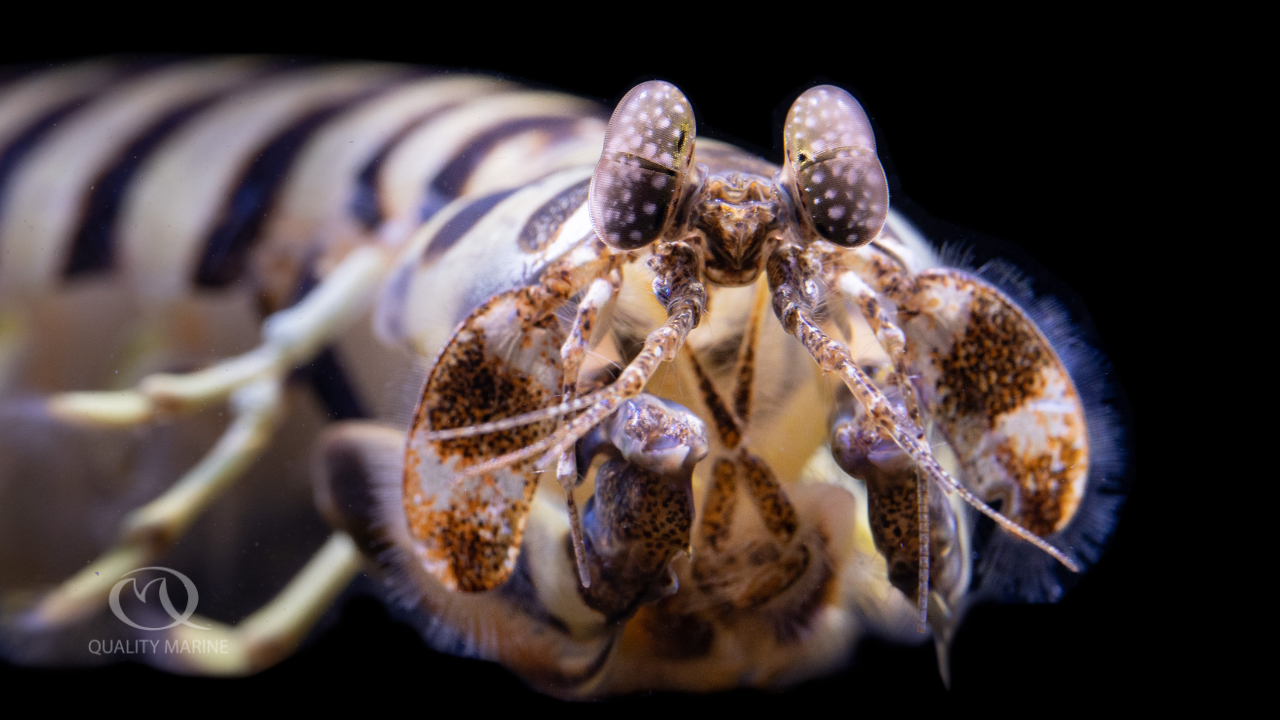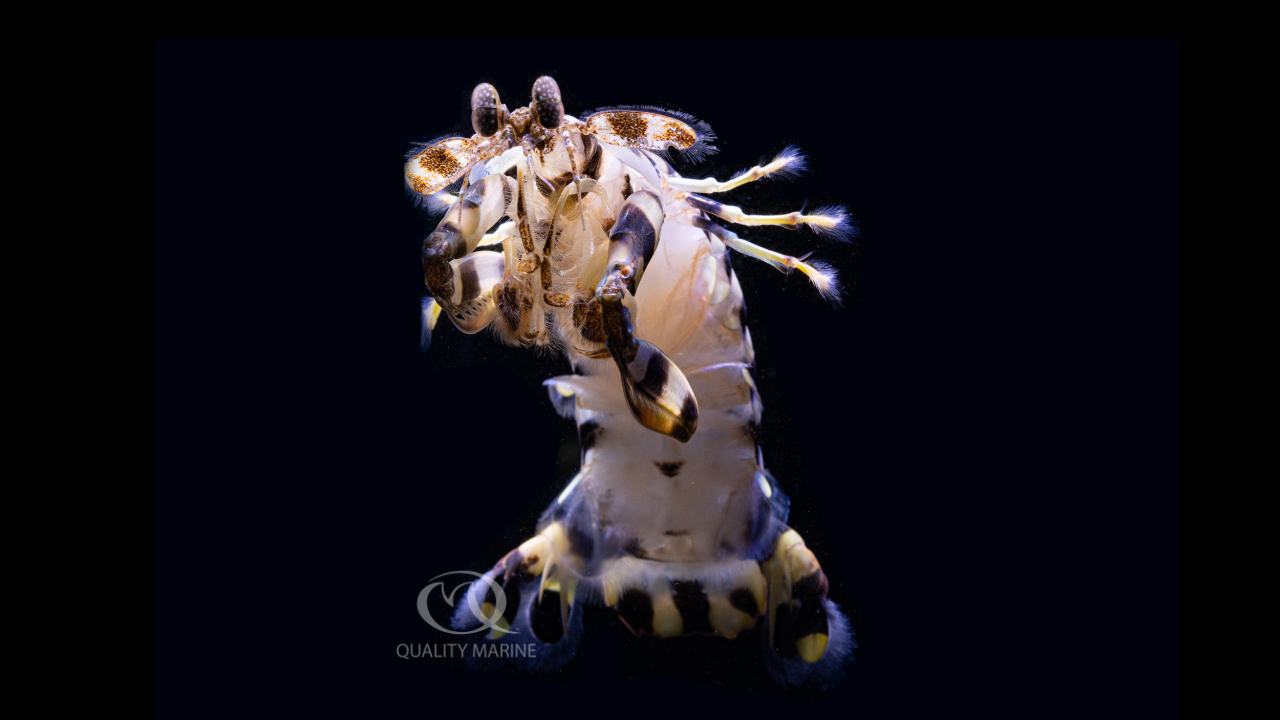Amazing Mantises and How to Keep Them - Part I

Mantis shrimp are one of the most fascinating members of the animal kingdom. With high intelligence, complex eyes, lightning speed, unique methods for capturing prey and a stunning array of colors, they bring something to the table for all interests. But what really is a mantis shrimp? Mantis shrimp are marine arthropod (think invertebrates with exoskeletons, segmented bodies and jointed appendages that must molt to grow) crustaceans (think crabs, lobsters, crayfish, shrimp, krill and isolpods) from the order Stomatopoda – which originates in ancient Greek as “mouth-foot”. Mantis shrimp originally split away from the other crustaceans previously listed about 340 million years ago, and all of the currently existing mantis groups have been around for 193 million years. There are many different species of mantis shrimp today, with more than 450 species and likely more that have yet to be discovered. Small mantis shrimp are about two inches with most of the species adult size falling between two inches and seven inches. Some mantis shrimp can grow to be 15 inches or slightly longer! Mantis shrimp as a species are mostly found in the Indian and Pacific oceans in tropical and subtropical regions, however other representatives exist elsewhere such as the Caribbean and the Mediterranean.

But what makes them truly unique compared to these other, similar crustaceans? Mantis shrimp eyes are probably the most complex in the animal kingdom. For example: dog eyes can only perceive green and blue light, while humans can perceive green, blue and red. Some birds go a step further from red, green and blue and also have the ability to see ultraviolet (UV) light. To see these different types of light requires different photoreceptors and with dogs two, humans three, and birds four its amazing to think that some insects like butterflies can have five, giving them the ability to navigate the complexly colorful world of flowers where they source their food. Mantis shrimp put all of these to shame however, having up to 16 different photoreceptors for red, green, blue, UV, and different types of polarized light. Mantis shrimp eyes have tens of thousands of clusters of these photoreceptor cells, and a strip of these are highly focused, while the rest of the eye takes in more from a wider angle – allowing them to have depth perception with a single eye. This is helpful because no matter where a prey item might appear to them, they will have a reasonable sense of how far away it is from them and whether or not it is time for them to strike at it. They also can move their stalked eyes independently of one another helping them to scan and take in more information all at once. Needless to say, we can't even really appreciate as humans what a mantis shrimp can see, and the amount of research done on this hasn’t yet helped us to fully understand what these different receptors are used for. However, some research has been done in seeing how mantis shrimp can differentiate between color spectrums – and they can differentiate on a scale of 50-100 nanometers of difference. When the difference was reduced to 12-25 nanometers they no longer could, whereas a human's eye sensitivity in a similar test can detect differences of only one to five nanometers. More research will need to be done to fully understand what they can see, and what they do with the data that all these photoreceptors give them.
Mantis shrimp are also unique predators, usually broken into two categories based on their method of hunting, spearers or smashers. Both spearers and smashers have raptorial claws, but the difference is what they feed on. Spearers claws are lined with spikes that prevent prey from escaping once speared. Spearers therefore are generally consuming faster moving, soft bodied things like fish, worms, and shrimp. Smashers on the other hand do exactly what it sounds like they do, which is to break open hard-shelled critters. In ancient Assyria mantis shrimp were called sea locusts, and today they are sometimes referred to as thumb splitters. This is because their raptorial claw can lash out at prey at speeds equal to that of a gun firing! Juveniles have been recorded shooting this claw out at speeds up to 1.8 million feet per second. As the mantis ages and gets larger this slows down, but it's still lethally fast for small fish or invertebrates that get too close to a mantis shrimp. What is the point of such speed? It’s a bit of overkill for just catching quick moving things like fish – but force is mass times acceleration. And with the relatively small mass of mantis shrimps the power needed to crack the sometimes-tough shells of prey items like snails and crabs requires a lot of acceleration. Secondarily, the speed of which these strikes occur actually causes the water to cavitate in the space previously occupied by the raptorial appendage and that generates a secondary shockwave from the strike that can also be strong enough to sometimes stun or disable prey items! Scientists at Harvard attempted to make a raptorial claw to emulate the speed of the mantis’. They were able to reach five meters per second, more than fifteen feet in a second. But their timing of a mantis shrimps' raptorial claw was four times faster that something they could engineer – an example of how the mantis shrimp has been finely tuned to be one of nature's most fascinating predators over the last 193 million years it's had to prefect its trade!

The beautiful mantis shrimp is not only fascinating in nature but can be kept as an awesome wet pet if given the correct habitat and care. In some parts of the world, mantis shrimp are even considered a delicacy! Mantis Shrimp are so different from most other aquarium residents that they really deserve their own category, so follow along as we discuss them and their husbandry over the next few articles, who knows maybe you will head down to your local fish store and ask them what sustainably sourced mantis’ Quality Marine has in stock today!